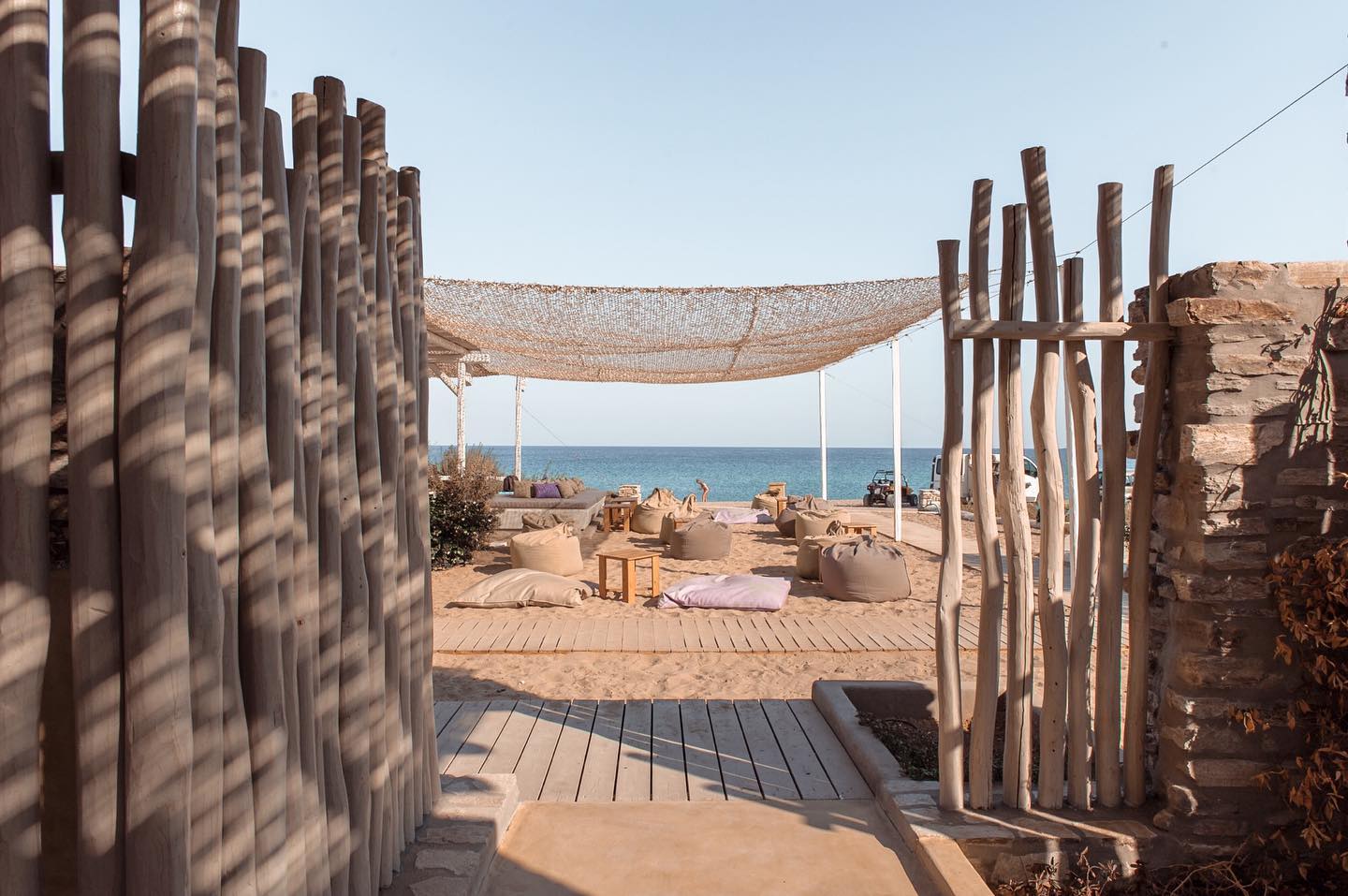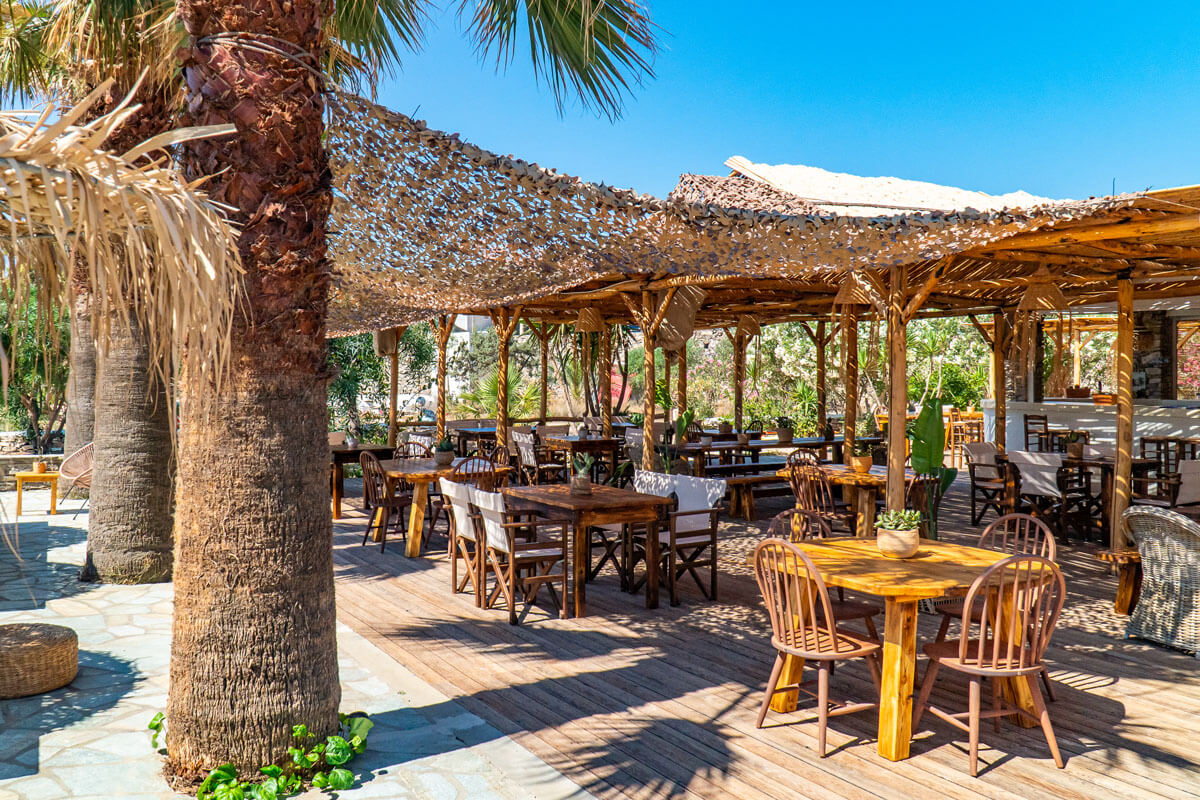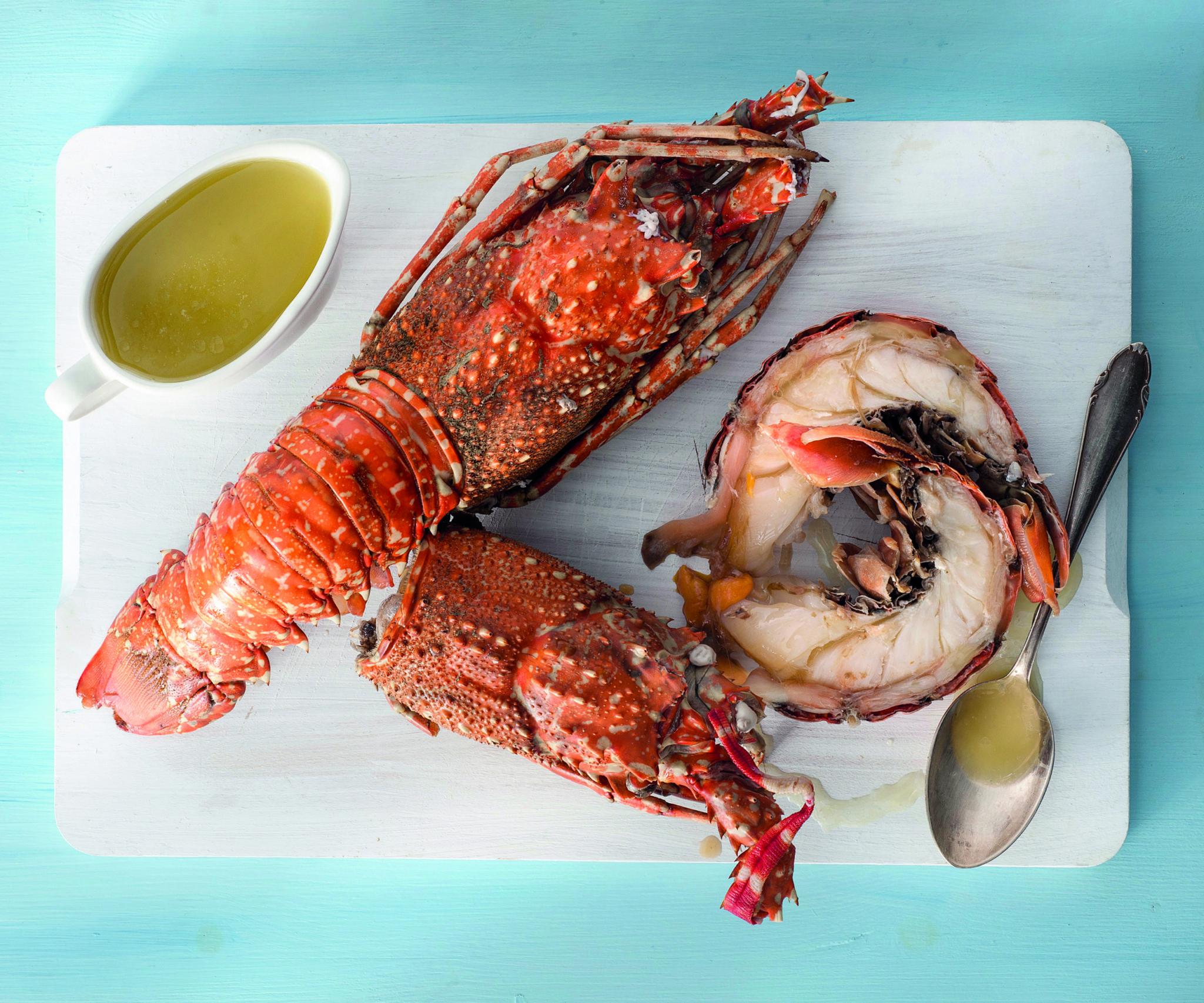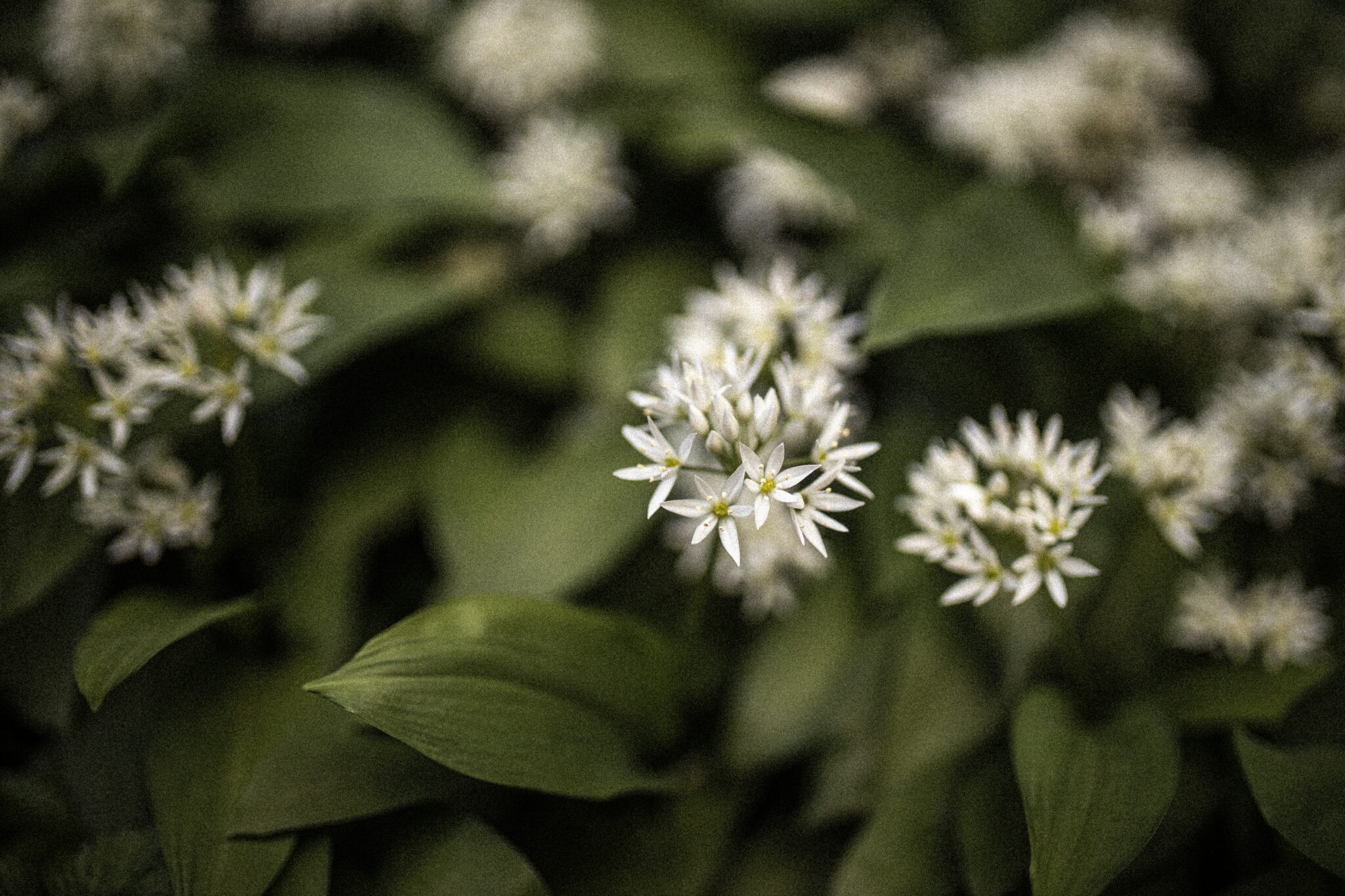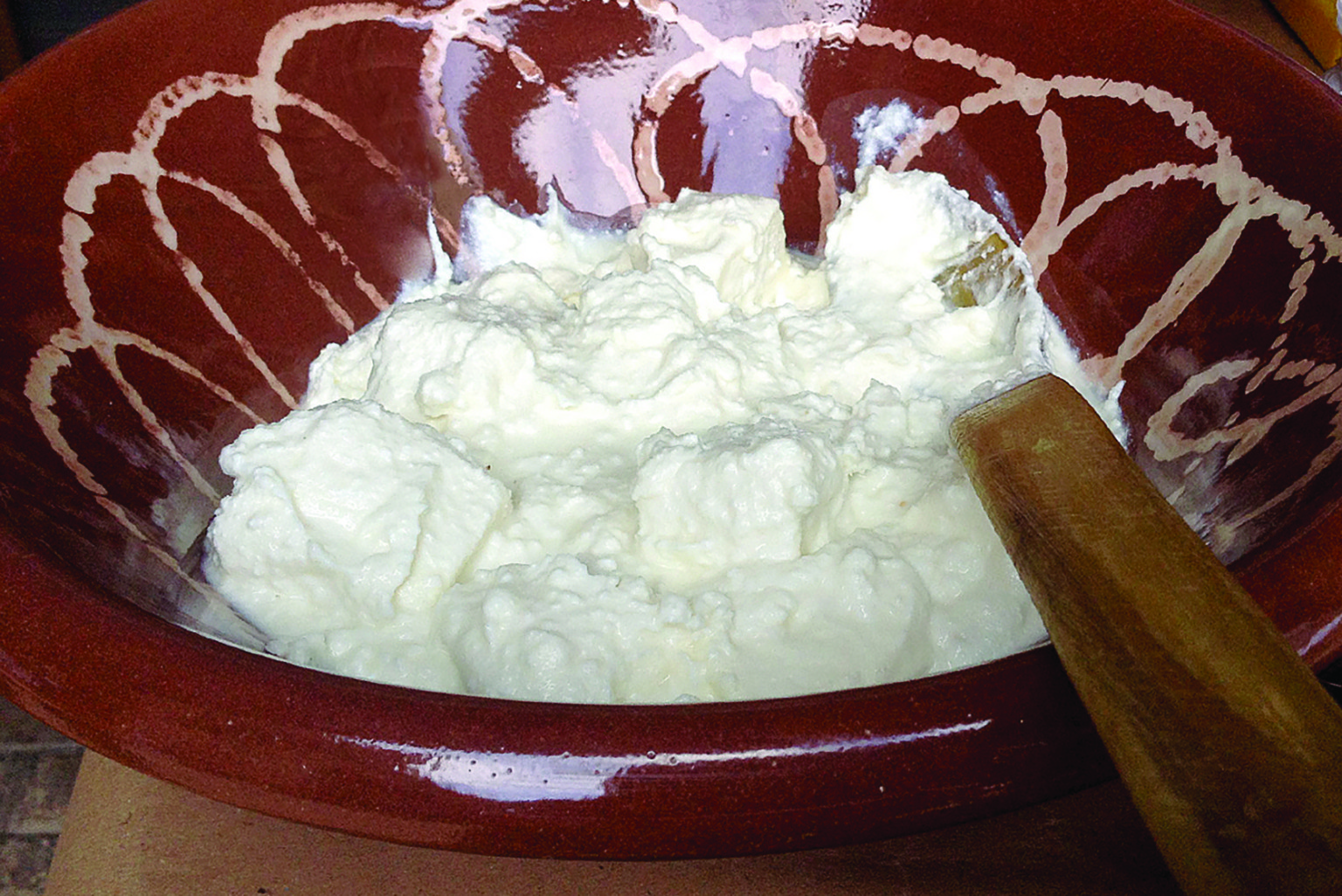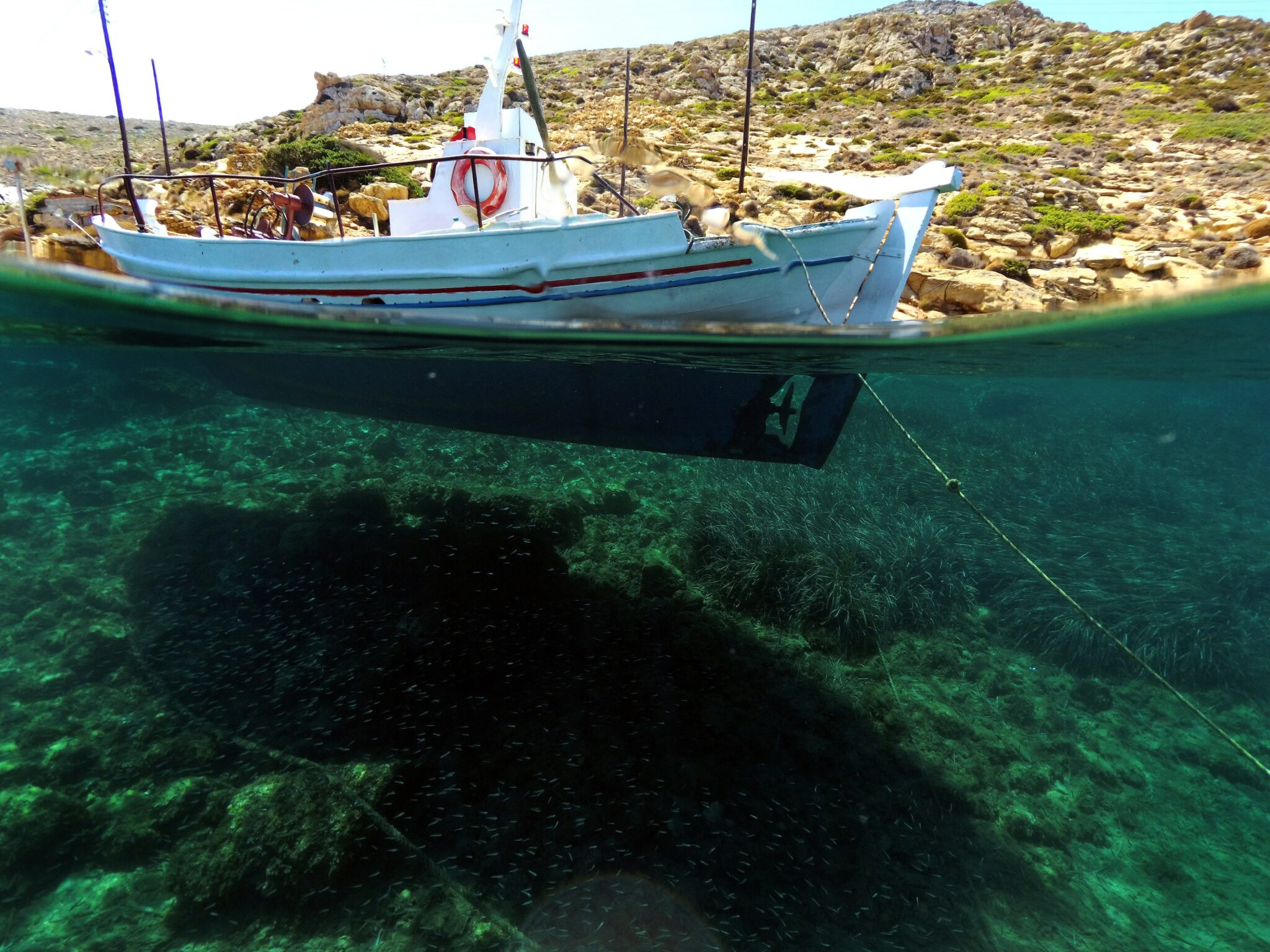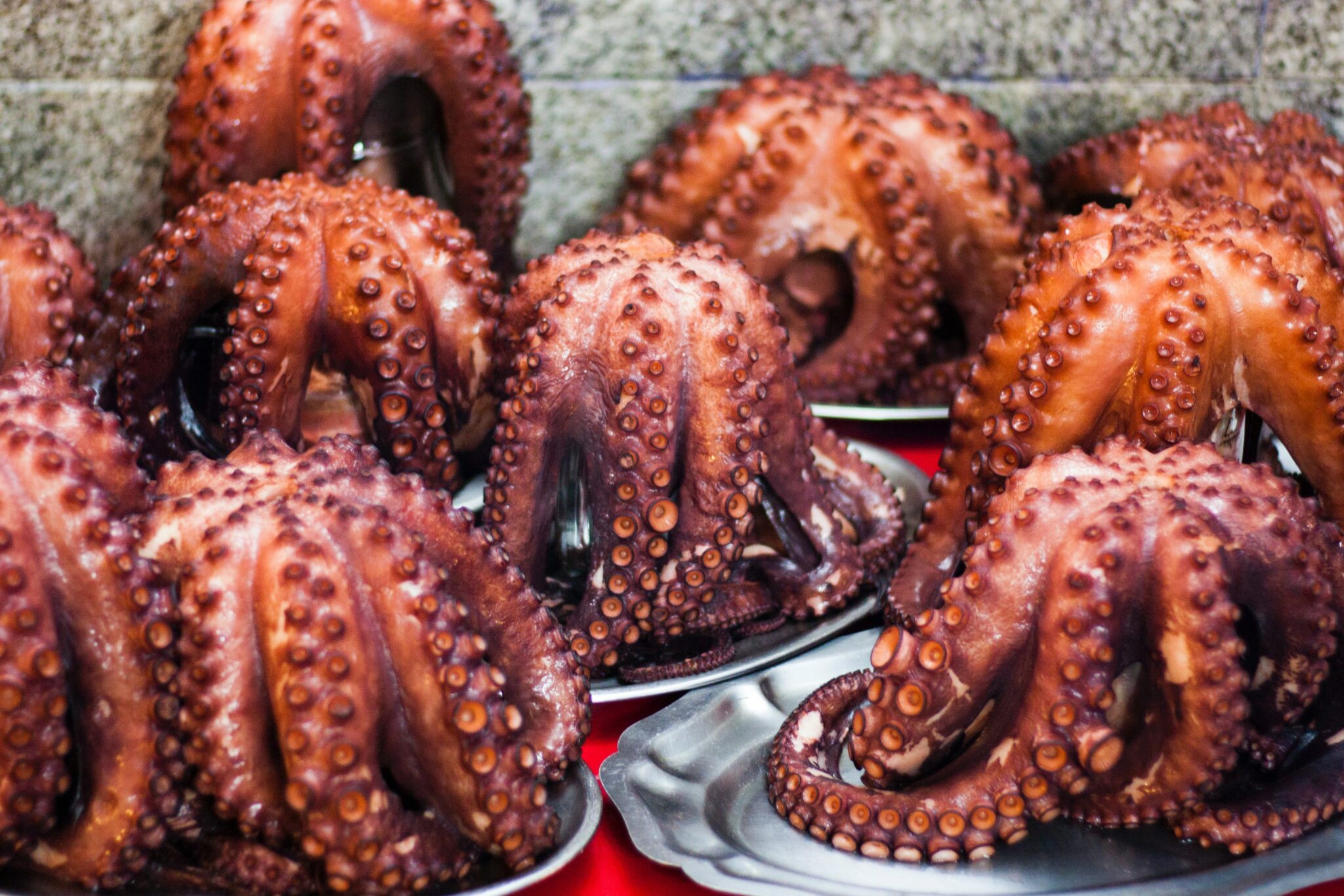The small island, situated just a stone’s throw from Paros, has become known for its tranquility, sandy beaches, and gentle landscape. The present-day occupation of its inhabitants is almost exclusively tourism, barely reminiscent of the once self-sufficient island with its own vineyards, olive trees, drought-resistant vegetable gardens, goats, and fishing boats that filled the tiny harbor. Nonetheless, in the island’s kitchens, some ancient flavors survive and offer their unpretentious deliciousness to visitors.
Mermigzelia, couscous, and ravioli
Antiparos may not be famous for any particular bread that one could try year-round, but both during Christmas and Easter, its bread rings deserve the visitor’s attention.
From a folkloric perspective, the “skaroi” hanging on the wall to bring good luck to the home are interesting. These are cross-shaped breads made from dough, placed in a dough-made “frame” that is prepared from the same dough used to make the mastic bread rings for New Year’s Day. At Easter, human-shaped bread rings called “lazarakia” and “vagioforoi” are made from the dough used to create “kotsines” — a type of sweet raisin bread shaped like a braid.
Homemade pasta is becoming increasingly rare. The mermigzelia, thin like spaghetti but more akin to barley, couscous, small dough balls similar to the couscous of mainland Greece, simple aranto, microscopic flour balls used for soups, and the thick variety are all in danger of becoming elusive.
When you hear people talking about ravioli, be aware that they are not referring to pasta. They mean sweet fried cheese pies with sweet myzithra cheese, and dough prepared with ouzo or suma. Ravioli, like xinogalenes, the oven-baked myzithra pies with sour myzithra cheese, are considered carnival dishes but are now served even in the summer at the island’s taverns. The same is true for the Easter cheese pies, similar to Tinos island’s “tsimpeta” and Santorini’s “melitinia”, which can be found year-round.
Provatses, wild garlic, and samphire
On the island’s low slopes and rocks, you will encounter thyme, sage, rosemary, and pink-flowered throubi (Satureja thymbra). Even if you do not recognize them by sight, their aromas will surely be familiar and cherished. Among the wild greens that are boiled for salads are the provatses (Limonium graecum and Limonium virgatum) and wild garlic (Allium staticiforme). The fig trees generously offer their fruits, and the few low juniper trees (Juniperus communis) provide their fleshy berries, known as tsierdokoka, once a beloved snack for children. On the beaches, samphire and the edible sea rocket (Cakile maritima) can be found, but unfortunately, no one harvests them nowadays.
The Cheeses of Antiparos
The island’s arid terrain and limited water resources restrict opportunities for agricultural or livestock-related activities. Primarily, goats are raised, with their population barely exceeding 1,000, alongside a few dozen female cattle. Consequently, the majority of cheeses produced are derived from goat’s milk, with cow’s milk playing a smaller role.
Xinogalo
Also known as Xiali, Axyali, or Xinogalo, this versatile product lies somewhere between yogurt and cheese. The production process varies slightly from island to island, but typically yields a smooth, soft, usually unsalted, tangy, and appetizing cheese consumed within a few days. If drained further and lightly salted, it transforms into Xinomizithra.
Kefalotyri
Antiparos’ Kefalotyri is characterized by its dominant use of goat’s milk, the near-total absence of sheep’s milk, and a small contribution from cow’s milk, resulting in a spicier, harder cheese. The same cheese can also be made into Ladotyri, while its whey is used to create Mizithra.
Touloumotyri
Similar to neighboring islands Paros and Naxos, Touloumotyri traditionally originates from blending Mizithra with fresh Kefalotyri cut into small pieces and maturing the mixture in “touloumia.” However, as “touloumia” makers dwindle and health regulations tighten, alternative maturation techniques have emerged, yielding comparable results.
A Quintet of Essential Ingredients for Sweets
Flour, grape must, honey, dried figs, and squash form the basis of all desserts in Antiparos. Flour is still used to make diples or xerotigana (fried dough), as well as anevates or monogyriztes tiganites (pancakes) that are fried, drizzled with honey, and sprinkled with sesame seeds and nuts. Zaxaroladopsomo is a thin, bread-like pastry with sugar and sesame seeds. Squash is used to make a fluffy, sweet kolokithopita (squash pie) and individual pitakia called kolopia, which are also sweet. Honey is molded into petmezénia koulouria (honey cookies).
The Character of Antiparos Wines
In ‘older’ geological times, Antiparos was connected to Paros, from which it is now separated by a strait that does not exceed 500 meters in some places. This almost “union,” which continued at varying degrees throughout the historical course of the two islands, seems to have determined and still determines the character of Antiparos wines.
Since December 2011, the vineyards of Antiparos have been part of the Protected Designation of Origin (PDO) Paros, so any grapes not made into wine by the vineyard owners themselves can be directed to the organized wineries of the neighboring sister island.
However, this possibility is rather hypothetical for now, as there are officially less than 200 acres of active vineyards, compared to about 1,200 acres a century ago, which, according to sources of the time, produced plenty of black wine of excellent quality, very similar to that of Paros.” In addition to the three grape varieties, Monemvasia, Assyrtiko, and Mandilaria, which are used in Paros PDO and Malvasia Paros PDO, the vineyards also host the white Savvatiano and the red Mandilaria and Mavro Aidani.
Savvatiano is the most widespread grape variety in Greece, although to some extent it has been associated with Attica and Retsina. Highly resistant to drought, it has adapted well to the poor and arid soils of the Cyclades, where it is also known as Koundoura Aspri. It combines very well with Assyrtiko.
The local distillate, like in Paros, is called Souma and comes from the grape marc (pomace), which is distilled in a raki pot.
Seafood meze
In the past, as soon as the steamboat approached Antiparos, visitors could see dozens of boats and fishing boats tied to the pier, which have decreased over the years as there are fewer fish and EU directives have led to a reduction of the Aegean fishing fleet. In the island’s cuisine, fish played a complementary role, as large fish were mainly consumed boiled or grilled, and smaller rockfish were used in fish soup (kakavia).
A characteristic meze of souma is sun-dried marides (small fish), which are hung in the sun after being salted and soaked in vinegar. In contrast, the famous and tasty octopuses caught in the Strait of Antiparos are sun-dried, hanging from ropes, like strange sea laundry.
In the past, before the invention of refrigerators, when they had many, the surplus octopuses were wrapped, meaning they were wound together into a ball shape to preserve them for winter. Those that were not consumed grilled were soaked to be cooked. They used to eat cuttlefish and squid in much the same way, either fried or boiled. Before lobster pasta became fashionable, there were plenty of lobsters on the island, which were usually served plain with oil and lemon. Moreover, sea urchins, limpets, various other shells, and pen shells are available, which, before being declared a protected species, were a favorite meze for souma, usually fried or boiled with oil and lemon.
Dareioti, N., Tsihlaki, Th., Androulidakis, A. Of wind and saltiness, Cyclades Chamber, 2015. © Cyclades Chamber.
Read also:
Paros: Cosmopolitan Cyclades island
The most beautiful villages of Paros
Piso Livadi: A small, peaceful seaside village in Paros, with excellent food



